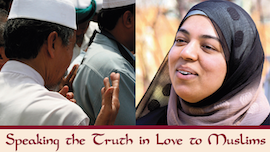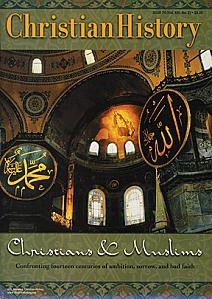Missionary-Printer Eli Smith Succeeded by Immersing Himself in Arab Culture

The American Press moved from Malta to this building in Beirut where it printed a complete Arabic translation of the Bible.
LATE IN THE 1830s Arabic readers began to encounter books printed with a beautiful new typeface, “American Arabic.” Some were Arabic classics and others were Christian works. This Arabic font, admired by everyone involved in Arabic printing, became the standard for a century. Its designer was the American missionary-printer Eli Smith.
Eli Smith was born in Connecticut in 1801. Trained at Yale and Andover Seminary, he became a missionary with the American Board of Commissioners for Foreign Missions. His superiors rushed him to Malta to replace Daniel Temple as printer of Arabic material, not even allowing him time to marry. Smith found the printing house in disarray, no Arabic fonts available, his services unneeded because Temple was not leaving, and the whole plan a big mistake.
What he did next surprised his mission board. Without their leave, in defiance of the direct orders of his boss, he left for the Middle East. His reasoning was simple. If he did not know Arabic, he would not be able to oversee high-quality Arabic productions. If his press produced faulty work, Muslim readers would hold Christianity in contempt. He immersed himself in Beirut’s culture, learned Arabic, and even lived on a farm so that he could acquire an everyday vocabulary. When the board demanded he return, he protested that six more months would have made him truly proficient in the language.
As a result of his studies, when he took over the press at Malta, he produced high quality work. His decision to print Arabic classics as well as Christian material led to a renaissance in Arabic culture. Arabic fonts of the time were clumsy and used more paper than necessary. Smith studied hundreds of examples of Arabic writing before designing the American Arabic font.
Once settled, he married, not once, but three times. His first wife, Sarah Lanman Huntington, lived only three years after their marriage, and the second, Maria W. Chapin, just a year, but the third, Henrietta S. Butler, outlived him.
In addition to his printing tasks, Smith preached almost daily, learned Turkish and other useful languages, and accompanied several expeditions to the Near East to identify Bible sites and to plan evangelization. His knowledge of Arabic was indispensable to the success of these missions. He also wrote a book in Arabic on the Holy Spirit.
Smith’s greatest undertaking was translating the Bible into Arabic. He worked at the task during the last eight years of his life. His perfectionism was so high that he only fully completed a few books. On this day, 11 January 1857, he died of a painful cancer, leaving Cornelius V. A. Van Dyck to finish the translation.
—Dan Graves
----- ----- -----
For ideas on how to witness to muslims watch Speaking The Truth In Love To Muslims at Redeem TV
Speaking the Truth in Love can be purchsed at Vision Video
For more about the Christian interaction with Islam, read Christian History #74, Christians & Muslims








